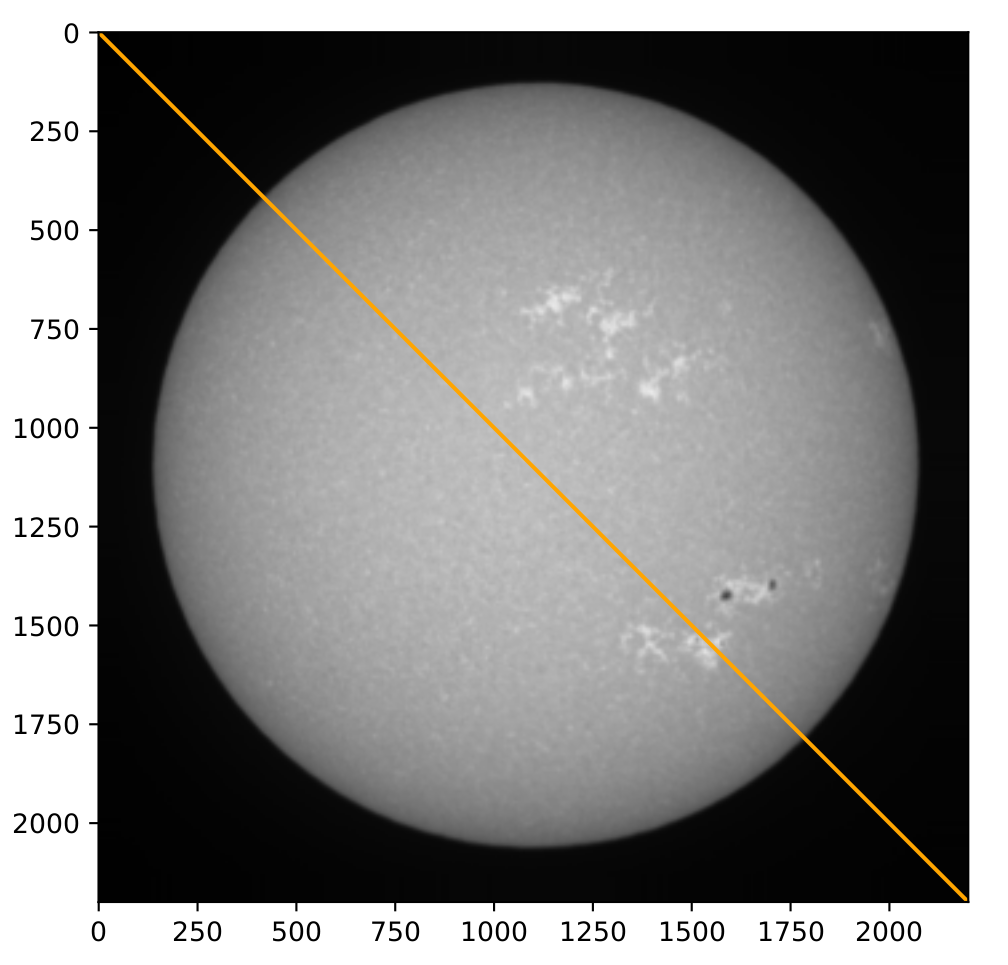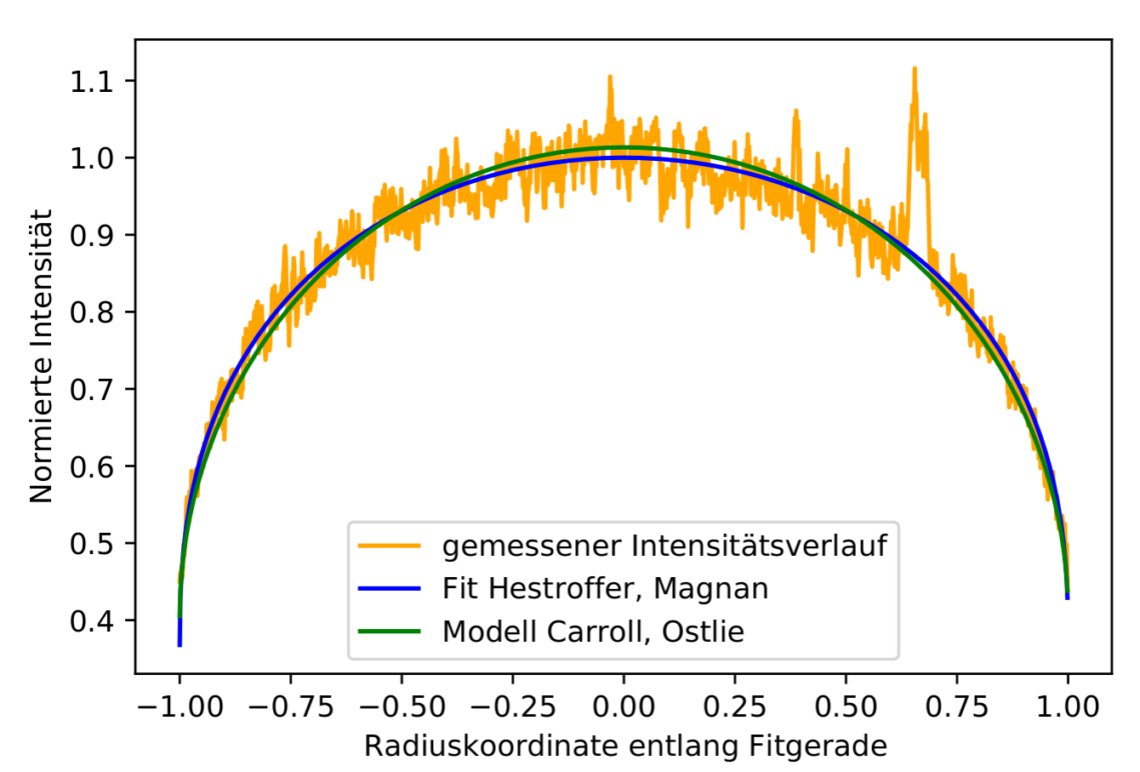We made use of the Turm observatory to look at the sun during our advanced lab course of the bachelor’s curriculum on 28 July 2021. During the observation, several series of photos were taken using all the observatory’s four telescopes, each one showing a different band of wavelengths. We were able to view different structures and phenomena on the surface and in the photosphere of the sun, most notably several small sunspots, plages and faculae. Most of the features could be observed in the broad white light band (10nm wide, centred around a wavelength of 540nm) as well as the distinct narrow bands around the Calcium-K-Line (at approx. 393 nm), the Hydrogen-α-line (at approx. 656 nm). A zoom on the image of one sunspot in all the three discussed wave lengths is visible in this figure.

It was moreover possible to quantitively analyse the images regarding the intensity of the light in each pixel, finding the so-called limb-darkening, which is the effect of the solar disc appearing fainter towards its boundary. For that matter, the pixel intensity was investigated along straight lines passing through the centre of the solar disc and matched to theoretical models. A particularly interesting example is shown in the following figures, where by chance the line along which the intensity was analysed passes through a solar faculae, showing a clear spike in intensity compared to the “background” the model fits describe.


Due to the covering up of the sky with clouds, we were forced to consult images taken during the previous week to qualitatively investigate the features on the boundary of the solar disc like faculae, solar prominences, and flares. Using the technique of tracking the sunspots over a longer period with more snap shots taken during the week prior to our observation, it became possible to determine the differential rotational period of the sun. Unfortunately, as the observation fell into a solar minimum, the tracking could only be carried out on a single sunspot which resulted in a single result of the rotational period. Nevertheless, our results of a sidereal rotational period of days matches reference values found in literature to a very good extent.
The experiment permitted us to explore solar observations first-hand and deepen our understanding of the solar atmosphere, the phenomena occurring therein as well as the techniques and experimental setups used to image and quantitively analyse features of the solar surface. We moreover were allowed to control the telescope and imaging equipment ourselves, which provided valuable hands-on experience in the execution of software-based steering of equipment.

